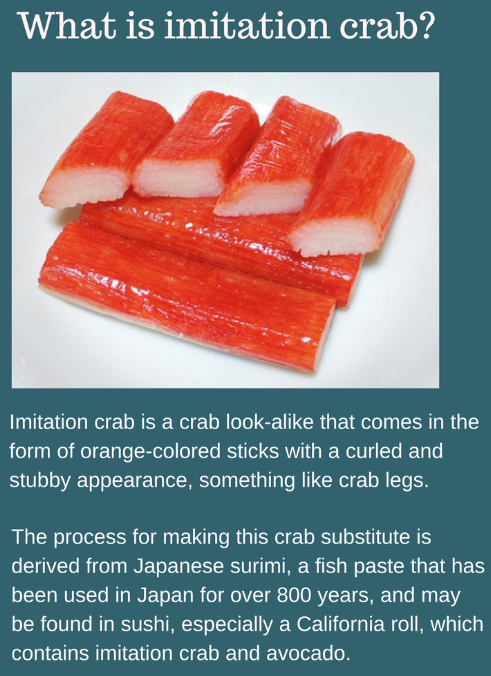BOURSESSENEGAL – Have you ever wondered, what is imitation crab? This popular seafood alternative has become a staple in many kitchens and restaurants. Made primarily from fish, crab offers a convenient and affordable option for those who love seafood but may not want or cannot afford to buy real crab. In this article, we’ll explore what crab is, how it’s made, its nutritional profile, and its uses in various dishes.
Understanding Imitation Crab
Imitation crab is a processed seafood product designed to mimic the taste and texture of real crab meat. Often referred to as “surimi,” it’s created using white fish, usually pollock, that undergoes a detailed process to achieve its desired flavor and consistency. The term “imitation” indicates that this product isn’t true crab but rather a substitute.
The Surimi Process
Surimi, the primary ingredient in imitation crab, has a fascinating history. It originated in Japan, where fishermen developed techniques to preserve fish. The process involves several steps:
- Preparation of Fish: High-quality fish, typically pollock, is cleaned and deboned.
- Washing: The fish is washed to remove any impurities, creating a clean base.
- Grinding: The fish is ground into a paste, which forms the foundation of surimi.
- Flavoring and Coloring: Additional ingredients, such as starch, salt, and flavorings, are mixed in. Natural colors, like carmine or paprika, may be added to give it a crab-like appearance.
- Forming and Cooking: The mixture is then shaped into sticks, chunks, or other forms, and cooked to achieve the final product.
Nutritional Profile of Imitation Crab
Now that we understand what imitation crab is, let’s look at its nutritional value. crab is lower in calories and fat compared to real crab. Here’s a breakdown of its typical nutritional content per 3-ounce serving:
- Calories: 70-100
- Protein: 15-20 grams
- Fat: 1-3 grams
- Carbohydrates: 5-10 grams
- Sodium: 500-900 milligrams
Health Benefits and Considerations
Imitation crab offers several health benefits:
- Low in Calories: It’s a great option for those watching their weight.
- High in Protein: It provides a good source of protein, essential for muscle maintenance and repair.
- Omega-3 Fatty Acids: While not as high as real crab, crab still contains some omega-3s, which are beneficial for heart health.
However, there are also some considerations:
- Sodium Content: crab can be high in sodium, which may not be suitable for everyone, especially those with high blood pressure.
- Lack of Nutrients: While it’s a good source of protein, crab doesn’t provide the same nutrients as real crab, such as zinc and vitamin B12.
Common Uses for Imitation Crab
Imitation crab is incredibly versatile and can be used in a variety of dishes. Here are some popular uses:
1. Sushi and Sashimi
One of the most common uses for crab is in sushi rolls, particularly California rolls. Its texture and flavor make it a perfect substitute for real crab, allowing for delicious sushi without breaking the bank.
2. Salads
crab is a fantastic addition to salads. It adds protein and a seafood flavor without being too overwhelming. Consider making a crab salad with mayonnaise, celery, and seasonings for a refreshing dish.
3. Pasta Dishes
You can incorporate crab into pasta dishes for a seafood twist. Creamy crab Alfredo or a seafood pasta salad can provide a delightful and satisfying meal.
4. Soups and Stews
crab works well in soups and stews, enhancing the flavor without adding excessive calories. Try adding it to a seafood chowder for a hearty dish.
How to Choose and Store Imitation Crab
Selecting the Right Product
When shopping for imitation crab, look for high-quality brands that use fresh ingredients. Check the label for the following:
- Ingredients List: Ensure that fish is the primary ingredient and that it doesn’t contain excessive additives or fillers.
- Freshness: If purchasing refrigerated crab, check the expiration date. Frozen options are also available and can be stored longer.
Storage Tips
Proper storage is crucial for maintaining the quality of imitation crab:
- Refrigeration: Once opened, store it in an airtight container in the refrigerator and consume it within three days.
- Freezing: If you won’t use it right away, crab can be frozen. Wrap it tightly in plastic wrap and place it in a freezer-safe bag.
Cooking with Imitation Crab: Tips and Recipes
When it comes to cooking with imitation crab, keep a few tips in mind:
1. Heating It Up
crab is pre-cooked, so it doesn’t require long cooking times. Simply heat it through in recipes to prevent overcooking, which can make it rubbery.
2. Flavor Enhancements
Enhance the flavor of imitation crab by adding spices and herbs. Lemon juice, dill, and garlic can elevate the taste and make your dishes more enjoyable.
3. Quick Recipes to Try
- Crab Cakes: Mix crab with breadcrumbs, egg, and seasonings. Form into patties and pan-fry for a delicious appetizer.
- Crab Dip: Combine crab with cream cheese, sour cream, and seasonings for a tasty dip. Serve with crackers or vegetables.
- Crab Tacos: Use crab as a filling for tacos. Add avocado, salsa, and cabbage for a refreshing twist.
The Environmental Impact of Imitation Crab
Another aspect to consider is the environmental impact. While crab uses fish like pollock, which are generally more sustainable than some crab species, it’s essential to choose products that prioritize sustainable fishing practices. Look for certifications or labels that indicate responsible sourcing.
Conclusion: Embracing Imitation Crab in Your Diet
So, what is imitation crab? It’s a convenient, versatile, and cost-effective seafood alternative that can enhance various dishes. With its lower calorie count and high protein content, it’s a worthy addition to many diets.
Whether you’re making sushi, salads, or hearty dishes, crab offers flexibility without sacrificing flavor. Remember to choose high-quality products and enjoy the many culinary possibilities this seafood alternative provides. Embrace imitation crab as a delightful way to enjoy seafood in your everyday meals!
REFERENCE : https://www.health.com/



